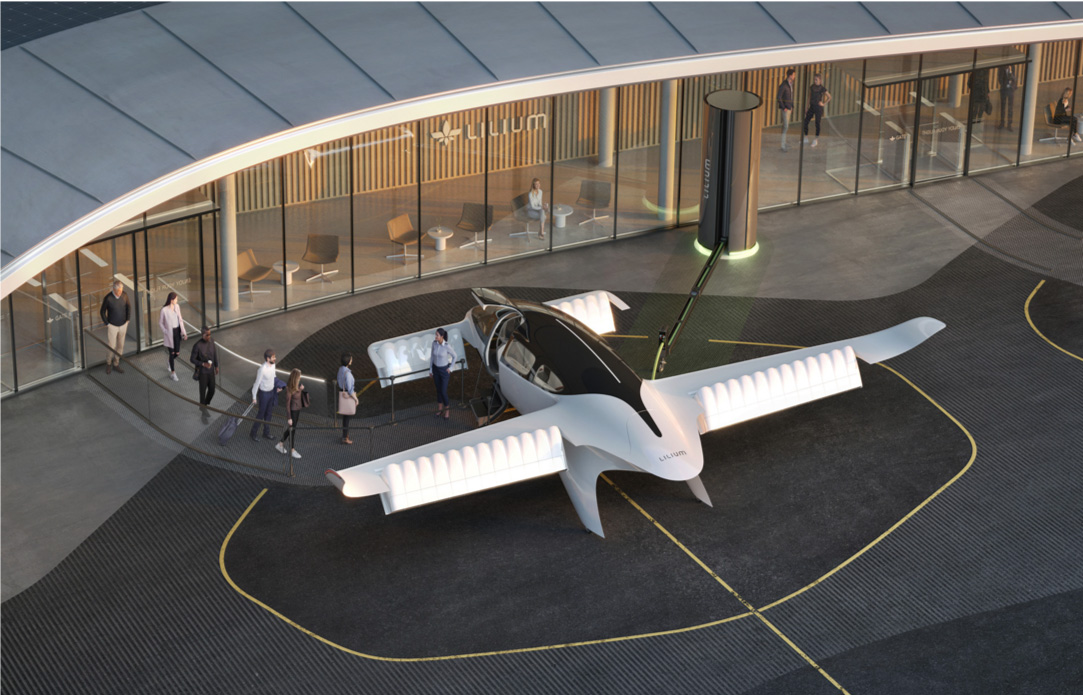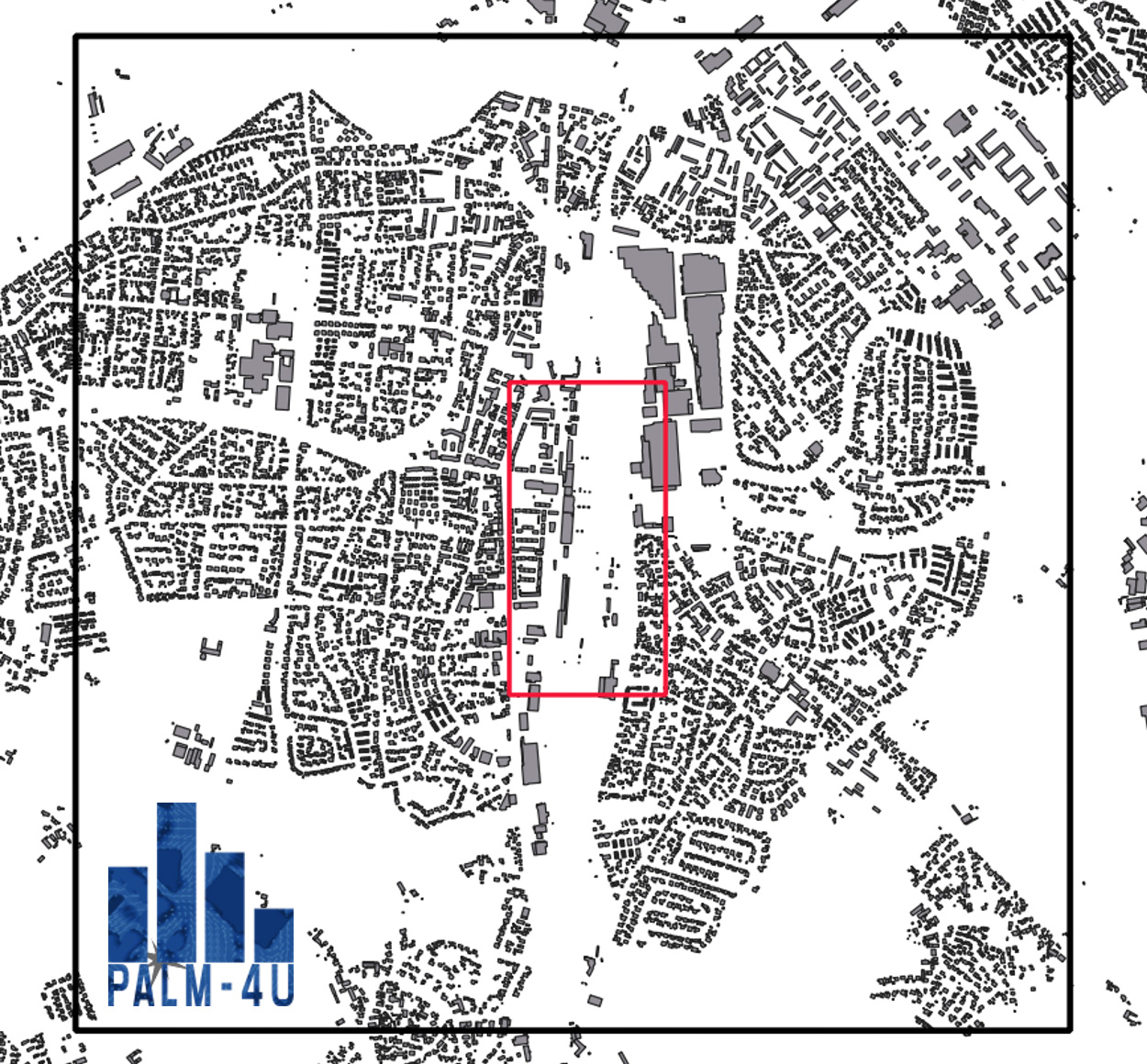The project’s goal is to investigate the feasibility of the urban mobility of the future in the Ingolstadt region. Issues relating to city infrastructure, building features, potential landing sites, noise and safety are considered. For this purpose, the practical construction of "Vertiports" is to be examined in the city of Ingolstadt. INCityTakeOff creates an overall general basis for the operation of future electric Vertical Takeoff and Landing (eVTOL) aircraft systems in urban environments.
INCityTakeOff eVTOL - Simulation of mechanical turbulence
Project goals
The Group "Urban Physics Modelling" was tasked with the simulation of mechanical turbulence (due to drag force of buildings) around the planned Vertiport in Ingolstadt. The 3D model of buildings in CityGML format for the city of Ingolstadt was used for the simulation. The data spanned an area of roughly 6 km x 6 km with the Ingolstadt main station in its center.
Current project status
In Ingolstadt, hourly measurements of wind speed and direction over multiple decades are available from a nearby DWD weather station. From this data, representative wind statistics were derived and used as inflow boundary condition for a neutral atmospheric boundary layer simulation using the LES (Large Eddy Simulation) mode of the PALM-4U software.
The goal of the simulations was to qualitatively estimate flight conditions of an eVTOL (electrical Vertical Take-Off and Landing) aircraft during takeoff and landing on the planned Vertiport location on the rooftop of the Ingolstadt main train station. Turbulence criteria such as turbulent kinetic energy (TKE) and the vertical turbulent momentum flux of the flow were evaluated in the boundary layer and along three possible flight paths. Also, the momenta of the flow on the aircraft itself, i.e., pitch, roll and yaw, were estimated.
Overall, typical structures of mechanical airflow were observed in the results. Wakes and recirculating flows could be seen behind buildings, turbulence was prevalent around buildings and edges, but only in the lowermost 50 – 60m. Barring possible convective air movements (which were not simulated in this project), little to no turbulent structures traveled upwards, and flight conditions in neutral atmospheric settings were deemed “safe” after reaching that height.
Project partners
- Institut für Engineering Design of Mechatronik System und MPLM e.V.
- Stadt Ingolstadt
- Fraunhofer IBP
- Lilium GmbH
- IFD GmbH
- Skyports Ltd.

